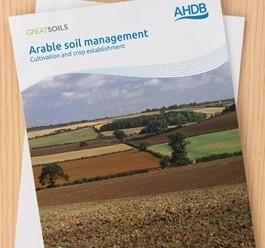Cultivation, any mechanical act to prepare the soil to raise crops, is an essential feature of many crop production systems.
In some situations, ploughing is essential; in others, virtually no soil movement delivers the desired result. Most frequently, a careful combination of biology (e.g. roots and worms) and metal is the most efficient way to manage soil structure and remove any barriers to the movement of water, air and roots.
With a spotlight on the sustainability of arable farming, our Arable soil management guide shines a light on the numerous factors that influence the need to cultivate or restructure soils.
Top ten factors to consider when adopting a managed approach to cultivations
- Rainfall
- Soil
- Management
- Drainage
- Residues/organic matter
- Cover/catch crop
- Trafficking
- Irrigation
- Pests
- Weeds
View the AHDB Establishment Approach Assessment Tool
Autumn Cultivations webinar with Harry Henderson
Autumn Cultivations conversations with Philip Wright



